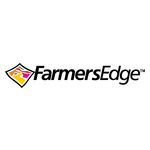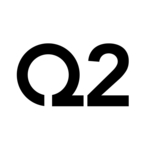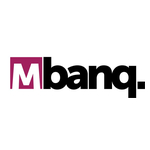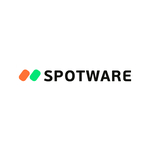KSA’s Lending Market Expected to Reach PHP 67 Bn by 2027, Driven by 4 Key Catalysts: Ken Research
Rising private spending in Saudi Arabia has boosted loan demand, signaling improved living standards. Diverse age groups seek loans for various purposes, with youth pursuing education and startups, while adults prioritize homes and cars. The popularity of Islamic finance is surging, catering to the predominantly Muslim population with Sharia-compliant products.
Gurugram, India, Sept. 27, 2023 (GLOBE NEWSWIRE) — Story Outline
- KSA’s private consumption expenditure has risen, indicating improved living standards and reduced poverty.
- Demographic factors influence lending preferences, with under-24 individuals seeking credit for education and ventures, while 25-54 age group seeks loans for homes and cars.
- Islamic finance has gained popularity, catering to KSA’s predominantly Muslim population.
- Digital banking has reshaped the lending landscape, reducing the need for physical bank branches.
The KSA lending market has shown outstanding growth potential, driven by various catalysts that have fueled the financial landscape in the country.
From consumption expenditure trends to the preferences of different age groups, along with the increasing popularity of Islamic finance and the transformative impact of digital banking, these factors have propelled the lending market forward.
1. KSA Consumption Expenditure Trends
- KSA’s private consumption expenditure has been following an increasing trend and rose by 26.7% from Oct 2020 to Oct 2022.
- An increase in private final consumption is usually indicative of a rise in standard of living of people in the society, and a decrease in levels of poverty.
- Consumption expenditure growth has been rising through the last decade.
As KSA’s personal expenditure is on rise, a need for short term and long-term loans by individuals also increases. Therefore, leading to growth in overall KSA Lending market.
Interested to Know More about this Report, Request a Free Sample Report
2. Youth: Credit for knowledge and ventures. Adults: Loans for homes and wheels.
People under the age of 24 taking credit for education and starting businesses while those between 25-54 seeking loans to buy homes and cars
- KSA has 4% of its citizens under the age of 24 leading to increased demand for credit for education and starting businesses.
- The population within the age range of 25-54 covers more than half of the population and seeks loans to finance the purchase homes and cars.
These needs of starting a business or buying a new car/house, all of which requires loans to integrate it. Thereby fueling the lending market in KSA.
3. Islamic finance has gained popularity
- Islamic finance has become increasingly popular in KSA, among the country’s large Muslim population (2% of the total population).
- Islamic finances: Sharia-compliant mortgages, etc. have seen increased demand.
- To get a Sharia-compliant mortgages one needs –
To qualify for a Sharia mortgage, you’ll typically need a deposit of between 10% and 35% of the property’s value. That said, it might be possible to find home purchase plans that need as little as a 5% deposit.
Visit this Link :- Request for custom report
4. Banking in KSA: More Credit, Fewer Branches – Digital Surge Rewrites the Rules
The increase use of digital banking and online services has diminished the need for physical bank branches.
Customers are increasingly using online and mobile banking services for day-to-day transactions like – transferring money to vendors, shopping, checking bank balance etc.
This trend has accelerated during the COVID-19 pandemic, with many customers avoiding in-person banking to reduce the risk of infection.
Conclusion
According to Ken Research, the KSA Lending market is expected to continues to expand in the upcoming years, to reach PHP 67Bn by 2027.
The lending market in KSA is on a promising trajectory, set to reach PHP 67 billion by 2027. This growth is fuelled by key factors like, rising private consumption expenditure signals improved living standards and reduced poverty, driving the need for loans, the diverse lending preferences of different age groups, with the young seeking credit for education and startups, while adults look for loans to buy homes and cars, further boost the market.
Additionally, Islamic finance has gained popularity among the predominantly Muslim population. Lastly, the surge in digital banking has reshaped the lending landscape, reducing the reliance on physical bank branches. These catalysts are reshaping KSA’s lending market and offering new opportunities for financial institutions while meeting evolving customer needs.
Customers are increasingly turning away from traditional bank branches in favour of the ease and accessibility provided by digital platforms.
These forces are altering the lending market, opening up new opportunities and posing new problems for Saudi financial institutions.
Request free 30 minutes analyst call
Market Taxonomy
KSA Lending Market Segmentation
Retail Loan
SME Loan
Other Loan
By Retail Loans
Home loans
Credit Card loans
Personal loans
Educational loans
BNPL Loans
Auto Loans
SME Loans
Invoice Financing
Supply Chain Financing
Asset Financing
Real Estate Financing
Other Financing
Others Loan
Micro Enterprise Loans
Corporate Loans
For More Insights On Market Intelligence, Refer To The Link Below: –
Related Reports by Ken Research: –
The US Micro Lending market is expected to grow at a CAGR of 12 % from 2022 to 2028 with low-interest Rates, Ease of Access, Technological Advancements, flexible repayment schedules, and Alternative credit score models. As the market is anticipated to grow remarkably in the forecasted period thus the demand for microloans will also increase significantly. To match the growing demand micro-lenders are planning to use data analytics and AI (Artificial Intelligence) to tailor lending products to their customers.
The Indian Micro Lending Market is projected to grow at a CAGR of 11% from 2022 to 2028 driven by variables like the unbanked population, the increasing population of microenterprises, government support for microfinance, and digital technology & mobile penetration. The Indian microlending market is all set to dominate the world microlending market within the next decade. Indian microfinance industry will face major transformation in terms of innovation in the coming years.
UAE BNPL market is expected to expand with a single digit CAGR in between 2022 and 2027 on the basis of revenue generated. It is anticipated that BNPL industry will grow at a substantial rate owing to factors such as due to wider acceptability at shops and better product offerings in a competitive landscape in the coming years. UAE has been culturally conservative towards BNPL and it is always seen as a debt trap instrument. But new-age start-ups are very focused on changing this mentality by creating awareness about how BNPL can be used for daily expenditure.
Buy Now Pay Later industry in South Africa is estimated to generate a revenue of USD 1569 Million in 2027E, expanding at a CAGR of double digits in between 2022P and 2027E Increasing demand for extra credit line with less stringent KYC procedures without relying on CIBIL scores will be traction for consumers for utilization of BNPL services. Retailers as end user will witness upsurge in revenue contribution to 80% of the market share as more retailers will be coming forward to incorporate the BNPL services in their online and offline store to increase consumer base by collaborating with BNPL players.
Follow Us –
LinkedIn | Instagram | Facebook | Twitter | YouTube
Contact Us:-
Ken Research Private Limited
Ankur Gupta, Director Strategy and Growth
[email protected]
+91-9015378249
CONTACT: Contact Us:- Ken Research Private Limited Ankur Gupta, Director Strategy and Growth [email protected] +91-9015378249





































